Abstract
The production of the agricultural crop plantain is positioned as one of the important factors in world agriculture. According to the latest data for 2022, Uganda is the largest producer, with production reaching 10.4 Mt. Considering the trends to date, Uganda has maintained its position as a major producer of plantains, with production remaining at a stable and high level. On the other hand, other major producing countries have also shown a certain degree of stability, and overall, it can be said that the demand and supply of plantains are relatively stable. Plantains are characterized by their high nutritional value and diverse uses. In some regions, they are consumed as a staple food, and have a wide range of uses depending on processed foods and cooking methods. They are also highly resistant to climate and soil conditions, and are cultivated in a relatively wide area. In the future, it will be necessary to take into account changes in demand due to population growth and changes in diet, as well as the possible impacts of climate change and other factors on production.
Plantain production (worldwide)
Considering the plantain production data from 1961 to 2022, Uganda achieved a maximum of 11.8 Mt in 2020, but since then, it has declined to 88.8% compared to the peak. This trend is due to various factors that affect plantain production. These factors include regional climatic conditions, natural disasters, and advances in agricultural technology. Economic factors and political instability may also have an impact. On the other hand, there may be an increasing trend in other producing countries. Plantain production has food security and economic importance in many countries. Therefore, fluctuations in production may affect domestic and international food supplies. A notable feature so far is that while Uganda is the leading producer, other countries also maintain a certain production volume. In the future, climate change and the need for sustainable agriculture will become increasingly important, and efforts to stabilize and increase production will be required accordingly.
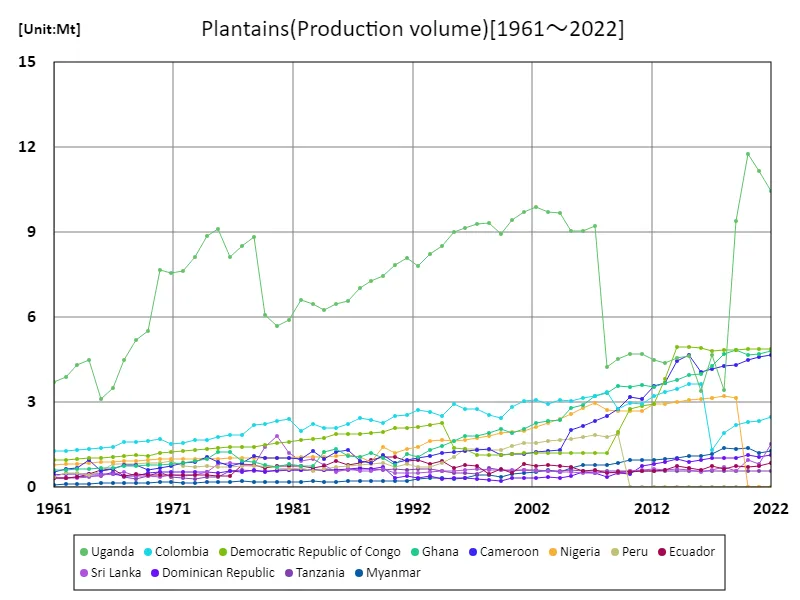

The maximum is 11.8Mt[2020] of Uganda, and the current value is about 88.8%
Plantain production (latest year, world)
The production of agricultural plantains reached 44.1 Mt worldwide in 2022. The largest producer is Uganda, producing 10.4 Mt. This data shows that plantain production is relatively dispersed, and while Uganda is the largest producer, other countries also play an important role when considering the total. Plantains are sometimes consumed as a staple food in some regions, and the demand for them can be said to be stable. However, factors such as regional climatic conditions and advances in agricultural technology affect the production of plantains, and production volumes can fluctuate. In addition, from the perspective of sustainable agriculture, it is important to consider the environment in plantain cultivation and adopt efficient production methods. In the future, it is necessary to take into account changes in demand due to population growth and changes in dietary habits, as well as the possible impacts of climate change and other factors on production. It is expected that the production of plantains will be stabilized and increased through the construction of sustainable agricultural systems and technological innovation.
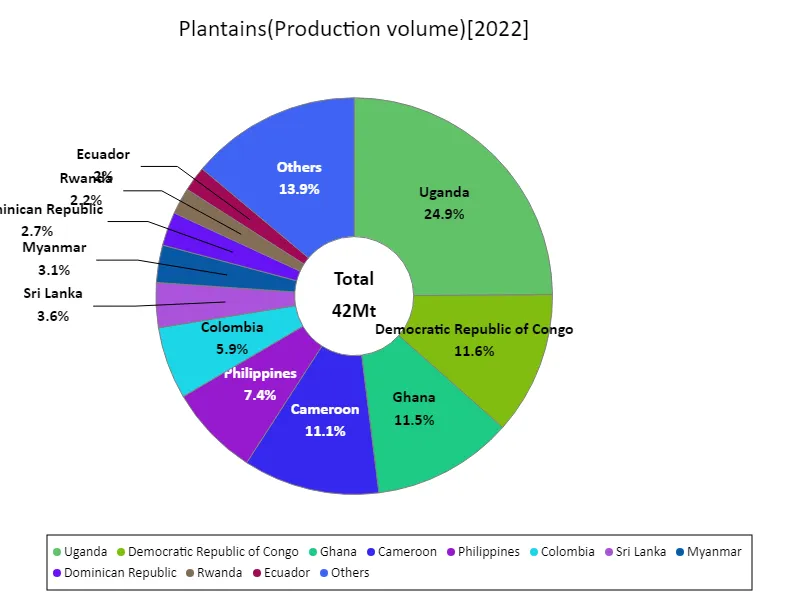

The maximum is 10.4Mt of Uganda, the average is 749kt, and the total is 42Mt
Plantain production (continent)
Africa recorded the highest overall production of agricultural plantains in 2022 at 31.7 Mt, the highest to date. This data indicates that plantain production plays an important role across the African continent. Plantains are consumed as a staple food in many parts of Africa, and demand for them is likely driving production. Another characteristic of plantains is that they are cultivated under diverse climatic conditions in Africa, due to their high adaptability to climate and soil conditions. These characteristics position Africa as the center of plantain production. On the other hand, plantains are also produced in other regions, and a certain amount of production is maintained in regions outside of Africa. In the future, the demand for plantains in each region, including Africa, is likely to increase further. It is expected that the adoption of sustainable agricultural practices and technological innovation will lead to increased production and improved quality.
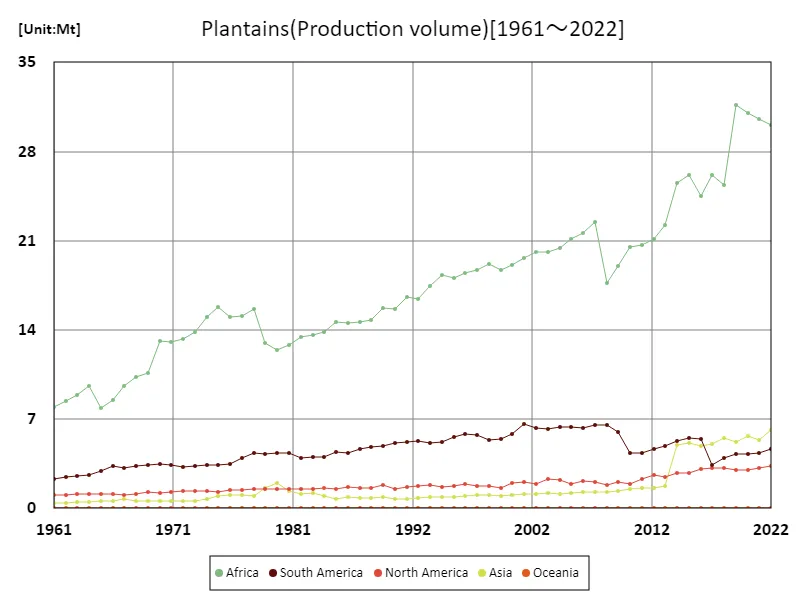

The maximum is 31.7Mt[2019] of Africa, and the current value is about 95%
Plantain production (latest year, continent)
Considering the data on the production of agricultural crop plantain in 2022, the maximum overall production is 30.1 Mt in Africa, which is the highest value. From this data, it is clear that Africa is the main producing region of plantain. Plantains are consumed as an important food in many parts of Africa, and their demand is driving up production. On the other hand, plantains are also produced in regions other than Africa, with an average production of 8.83 Mt worldwide. This suggests that plantain production is widely distributed worldwide. Different regions have different climates and soil conditions, so different production techniques and cultivation methods are used in each region. In addition, plantains have a variety of uses, so their demand is stable and they are a stable source of income for producers. However, various factors, such as climate change and the effects of pests and diseases, affect plantain production. From the perspective of sustainable agriculture, producers need to work on considering the environment and adopting efficient production methods. In the future, plantain production may increase further through increased demand and improved production techniques.
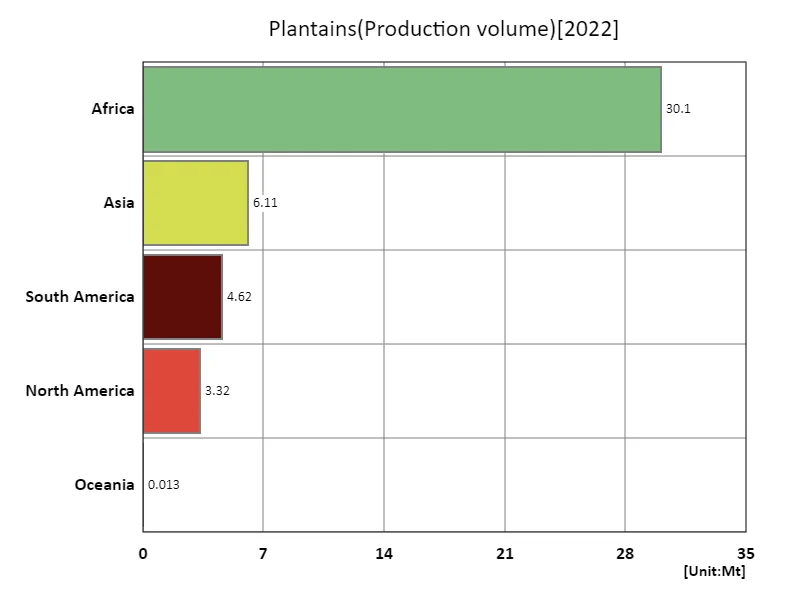

The maximum is 30.1Mt of Africa, the average is 8.83Mt, and the total is 44.2Mt
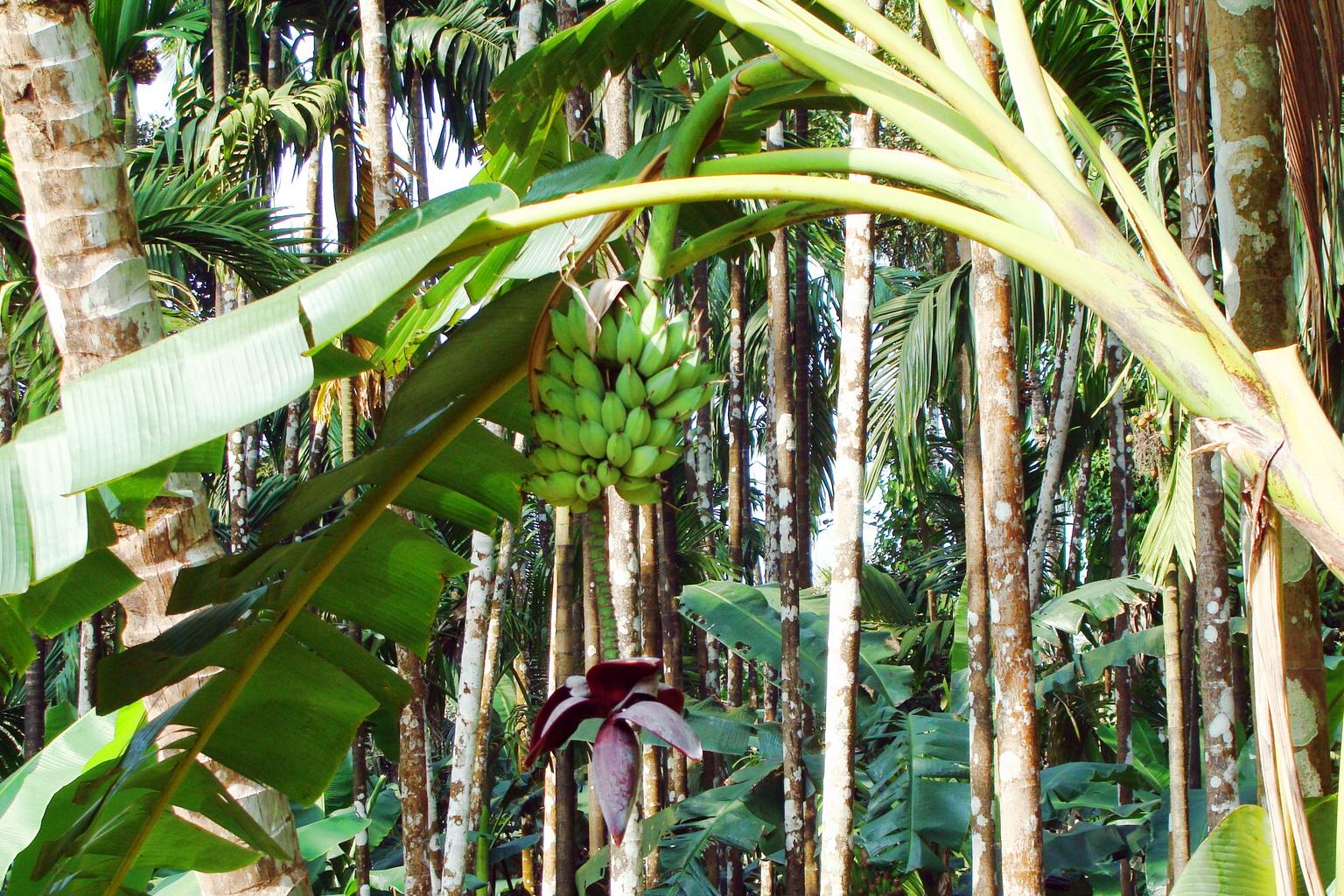


Comments